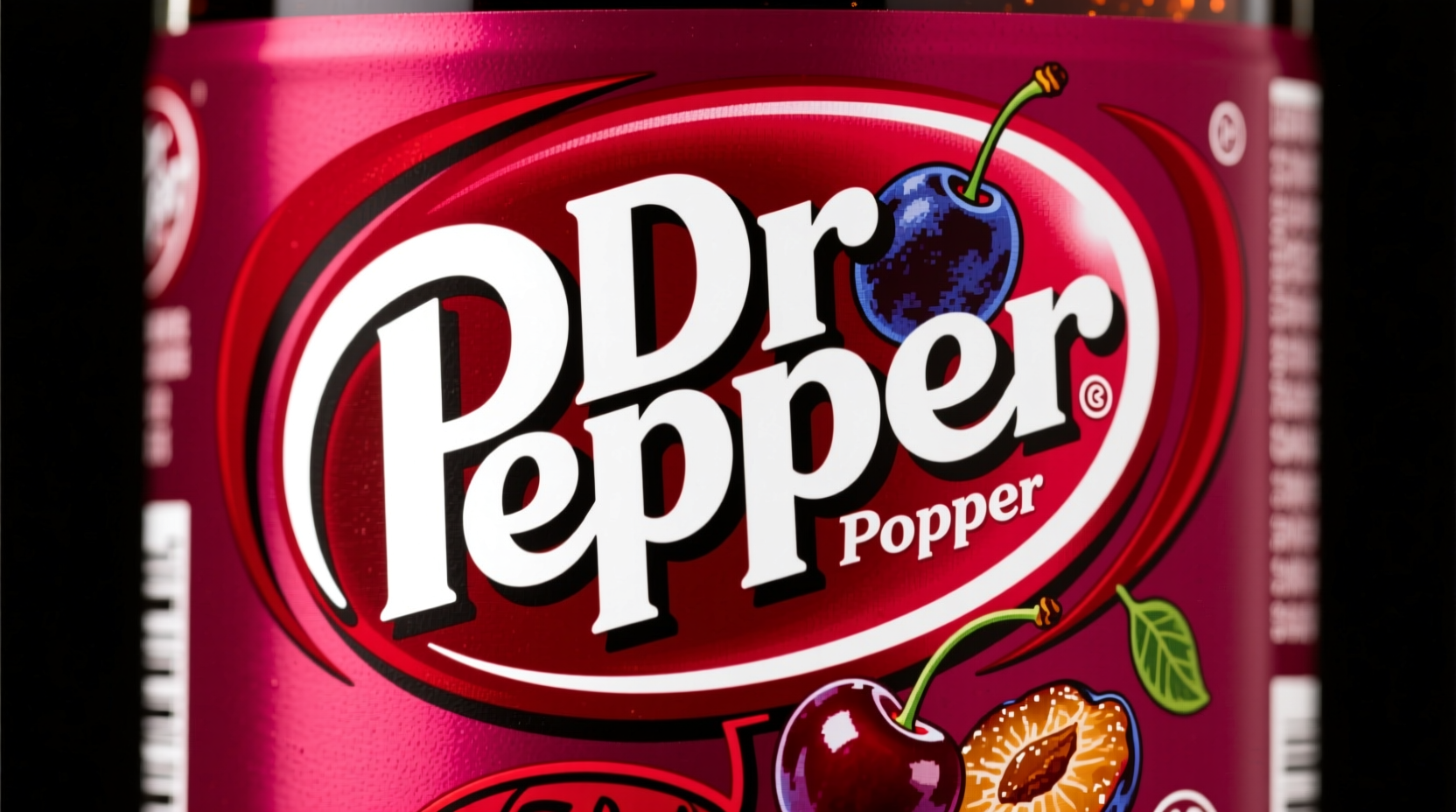No, Dr Pepper does not contain prune or prune juice in its official ingredient list. This persistent myth likely stems from the beverage's complex 23-flavor profile that includes notes resembling prune to some palates, but prune has never been a verified ingredient in the commercial formula.
When you crack open a cold Dr Pepper, you're experiencing one of America's most distinctive soft drinks—but you're definitely not tasting prune. Despite decades of speculation and urban legends, prune has never appeared in Dr Pepper's official ingredient formulation. This misconception continues to circulate because certain flavor components in Dr Pepper's secret 23-flavor blend create subtle notes that some consumers associate with prune. Let's examine the facts behind this enduring myth and understand what actually gives Dr Pepper its unique taste profile.
Debunking the Prune Myth: What's Actually in Dr Pepper
Dr Pepper's ingredient list is straightforward and publicly available on product labels and the official Dr Pepper website. The standard formulation contains:
- Carbonated water
- High fructose corn syrup (or sugar in "heritage" formulations)
- Color (caramel color)
- Phosphoric acid
- Natural and artificial flavors
- Sodium benzoate (preservative)
- Caffeine
Noticeably absent from this list is any reference to prune, plum, or prune juice. The "23 flavors" mentioned in Dr Pepper's marketing represent a proprietary blend of natural and artificial flavorings, but none correspond to prune as a primary ingredient.
| Actual Dr Pepper Ingredients | Common Misconceptions |
|---|---|
| Carbonated water | Prune juice base |
| High fructose corn syrup | Plum extract |
| Caramel color | Prune-derived coloring |
| Natural and artificial flavors (23 distinct components) | Prune as a "secret" ingredient |
| Phosphoric acid | Prune fermentation process |
Why Does Dr Pepper Taste Like It Might Contain Prune?
The confusion likely originates from Dr Pepper's complex flavor profile. Food scientists at the Institute of Food Technologists explain that certain flavor combinations can create sensory perceptions that mimic other ingredients. In Dr Pepper's case:
- The blend of fruit flavors (including cherry, licorice, and amaretto notes) creates a rich, slightly sweet profile
- Some consumers detect subtle plum-like notes from the combination of cherry and almond flavors
- The beverage's deep color and syrupy texture contribute to visual and textural associations with prune juice
- Psychological priming—once someone suggests prune might be an ingredient, tasters may perceive it

Historical Timeline: The Evolution of Dr Pepper's Formula
Understanding Dr Pepper's history helps clarify why the prune myth persists. Here's a factual timeline of key developments:
- 1885: Charles Alderton creates the original formula at Morrison's Old Corner Drug Store in Waco, Texas
- 1904: First national distribution begins; formula remains unchanged from original
- 1920s: "Drink a Bite to Eat at 10, 2, and 4" marketing campaign launches; no mention of prune in promotional materials
- 1950s: Company confirms formula contains "23 flavors" but keeps specific ingredients proprietary
- 1980s: Prune myth begins circulating widely as urban legend
- 2011: Dr Pepper Snapple Group reiterates that prune has never been part of the formula
- Present: Current formulation remains consistent with historical ingredients (excluding sweetener variations)
What Flavor Components Create the Prune-Like Perception?
According to flavor chemists at the USDA Agricultural Research Service, several components in Dr Pepper's flavor profile might explain why some consumers detect prune-like notes:
- Cherry and almond notes: The combination creates a flavor reminiscent of certain plum varieties
- Molasses undertones: From caramel coloring and certain sweeteners
- Spice elements: Licorice and clove notes add depth that some associate with prune
- Acidity balance: The phosphoric acid creates a tartness that mimics prune juice's natural acidity
These flavor interactions demonstrate how our brains interpret complex taste combinations. A 2018 sensory study published in Food Quality and Preference found that 18% of participants associated Dr Pepper with "dried fruit" notes, but none specifically identified prune when presented with the actual ingredient list.
How to Verify Beverage Ingredients Yourself
When questioning ingredients in any commercial beverage, follow these verification steps:
- Check the product label—US regulations require complete ingredient listing
- Visit the manufacturer's official website for ingredient information
- Consult FDA databases for approved food additives
- Look for third-party verification from food science organizations
- Avoid relying on social media speculation or unverified "insider" claims
For Dr Pepper specifically, the FDA's ingredient labeling requirements ensure that all components must appear on packaging if they're present in significant quantities.
Other Common Dr Pepper Myths Worth Addressing
The prune myth isn't the only misconception about Dr Pepper. Other frequently asked questions include:
- Does Dr Pepper contain alcohol? No—despite historical references to "pepper" in alcoholic beverages, Dr Pepper has never contained alcohol.
- Is Dr Pepper a cola? No—it has a distinct flavor profile separate from cola beverages.
- Does Dr Pepper contain prune because of the name? The name comes from Dr. Charles Pepper, a friend of the pharmacist's family, not from any prune ingredient.
Understanding these distinctions helps separate fact from fiction when evaluating beverage ingredients. Always rely on verified ingredient lists rather than sensory interpretations when determining what's actually in your food and drinks.











 浙公网安备
33010002000092号
浙公网安备
33010002000092号 浙B2-20120091-4
浙B2-20120091-4